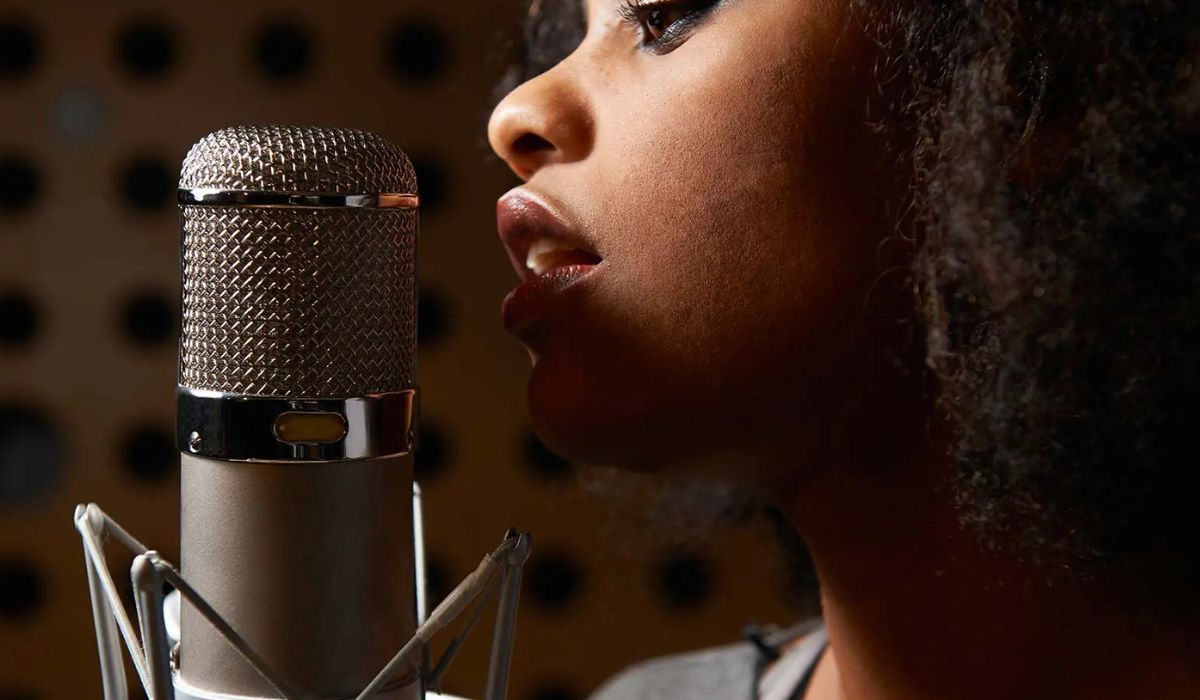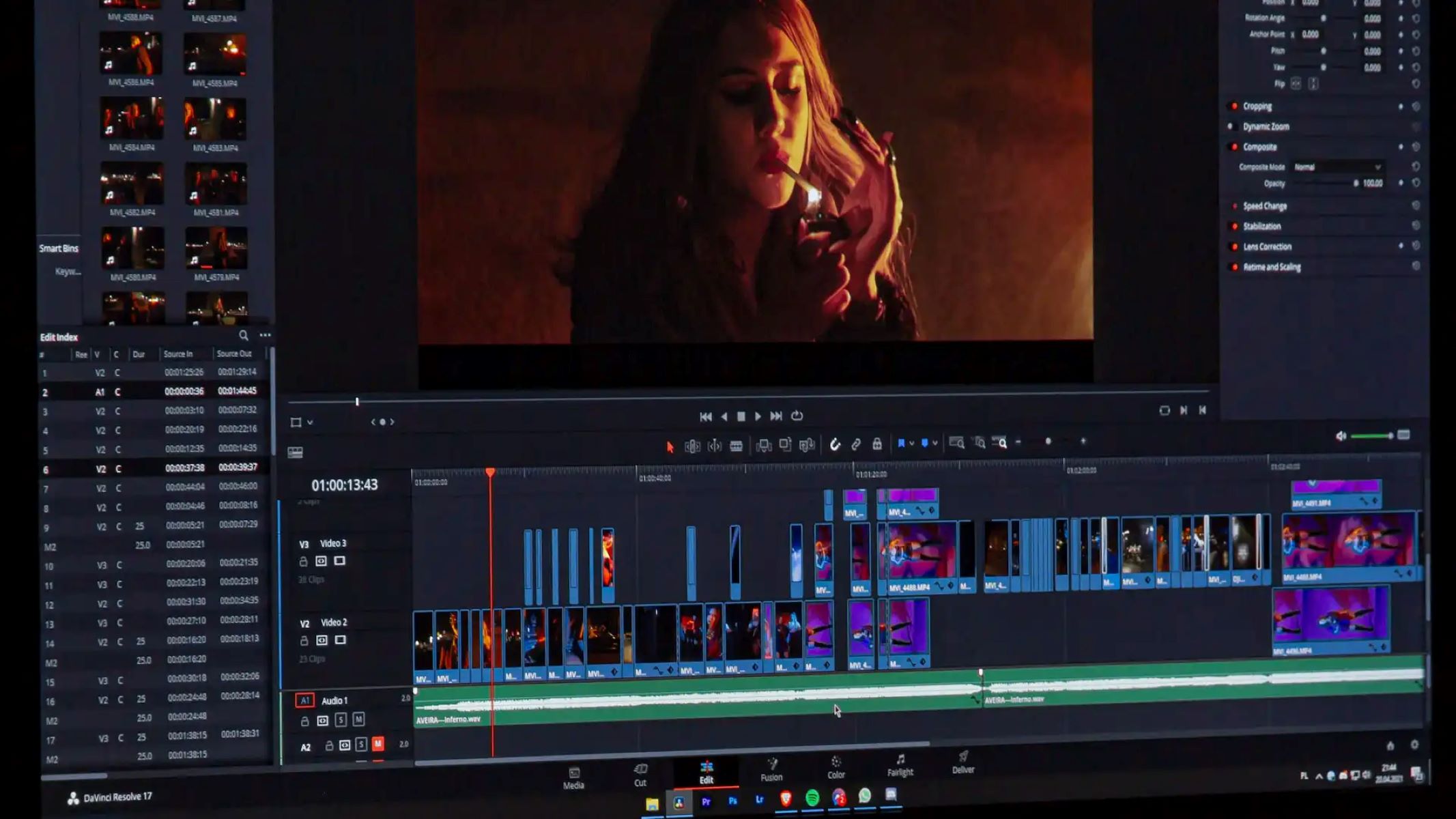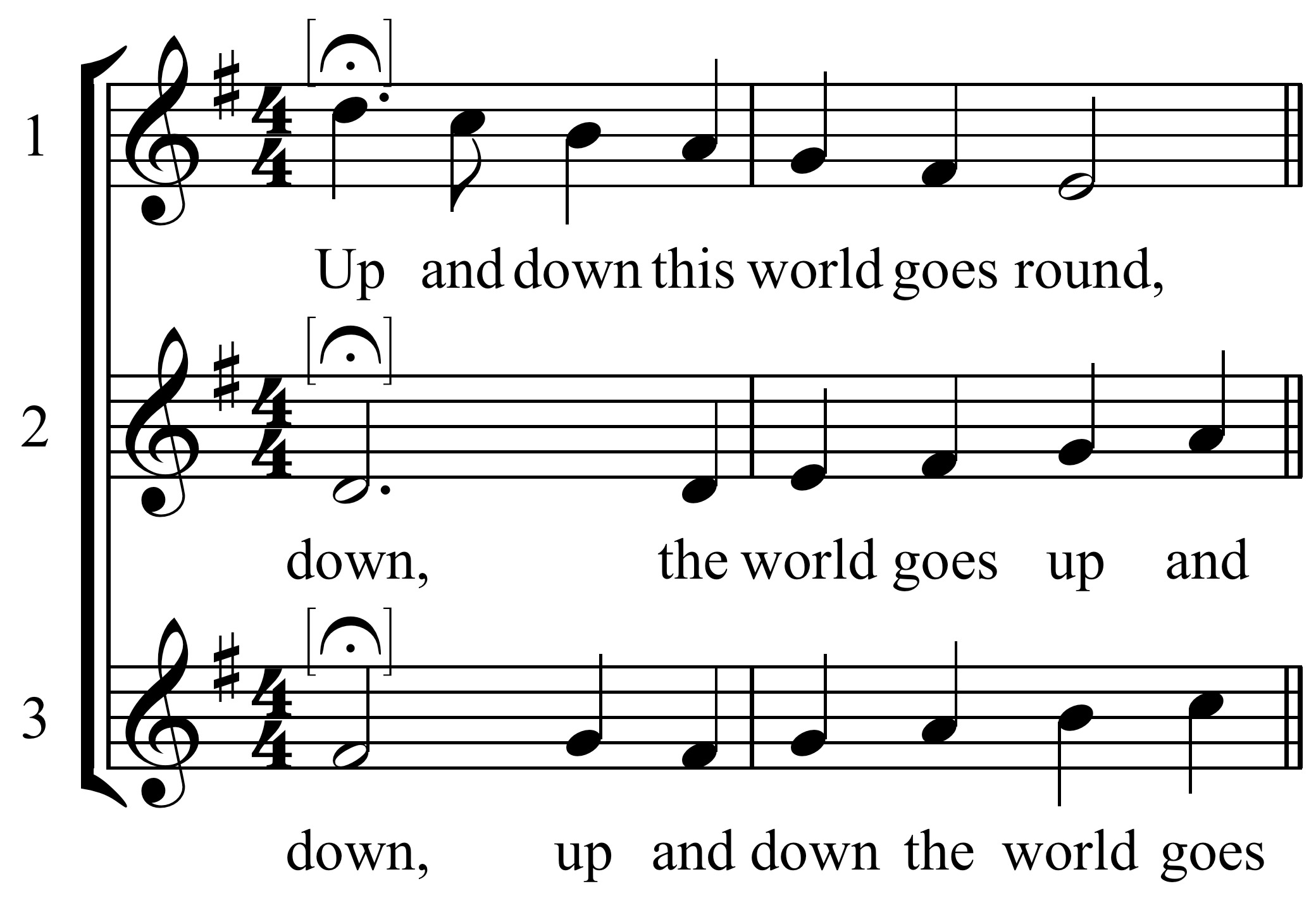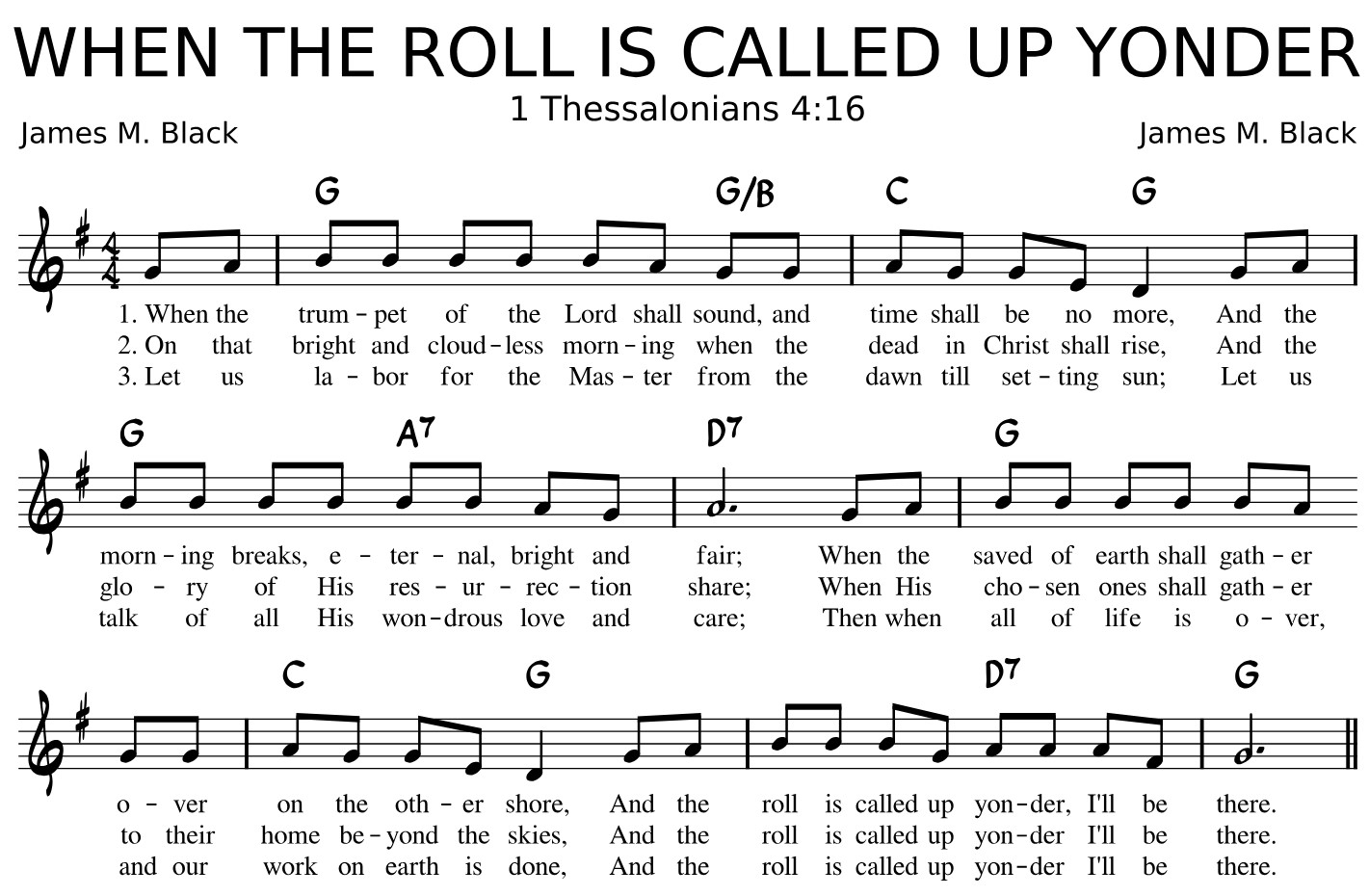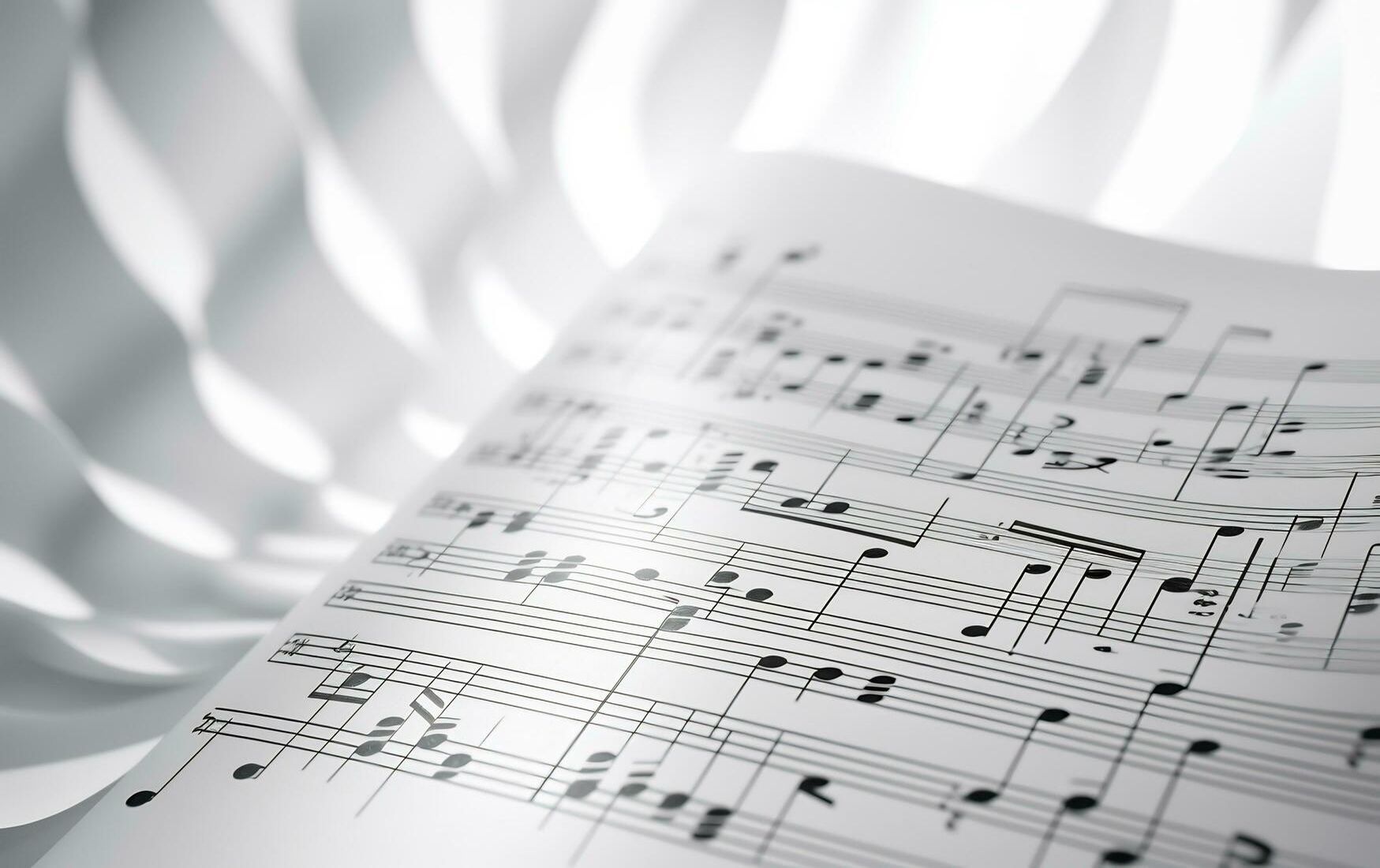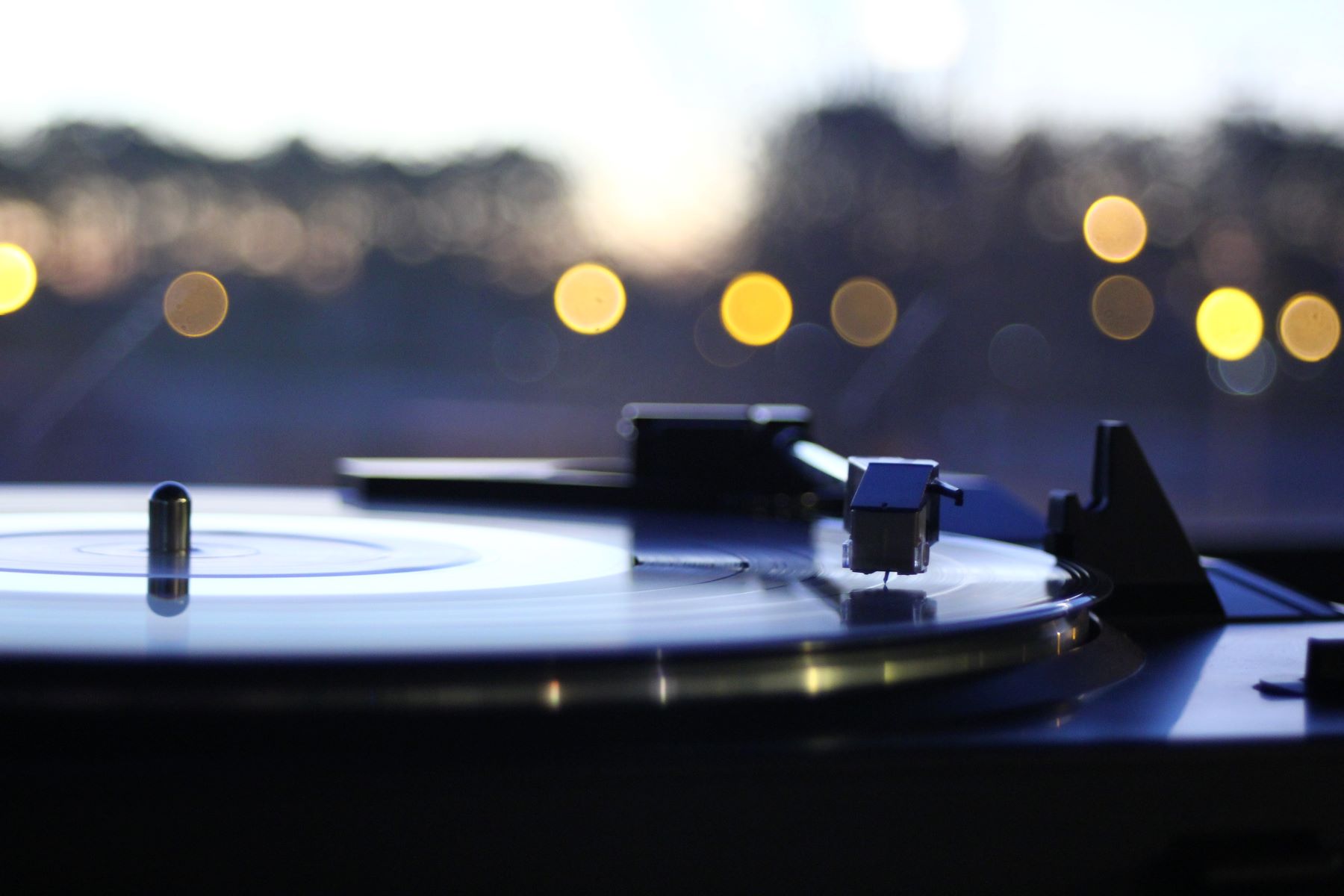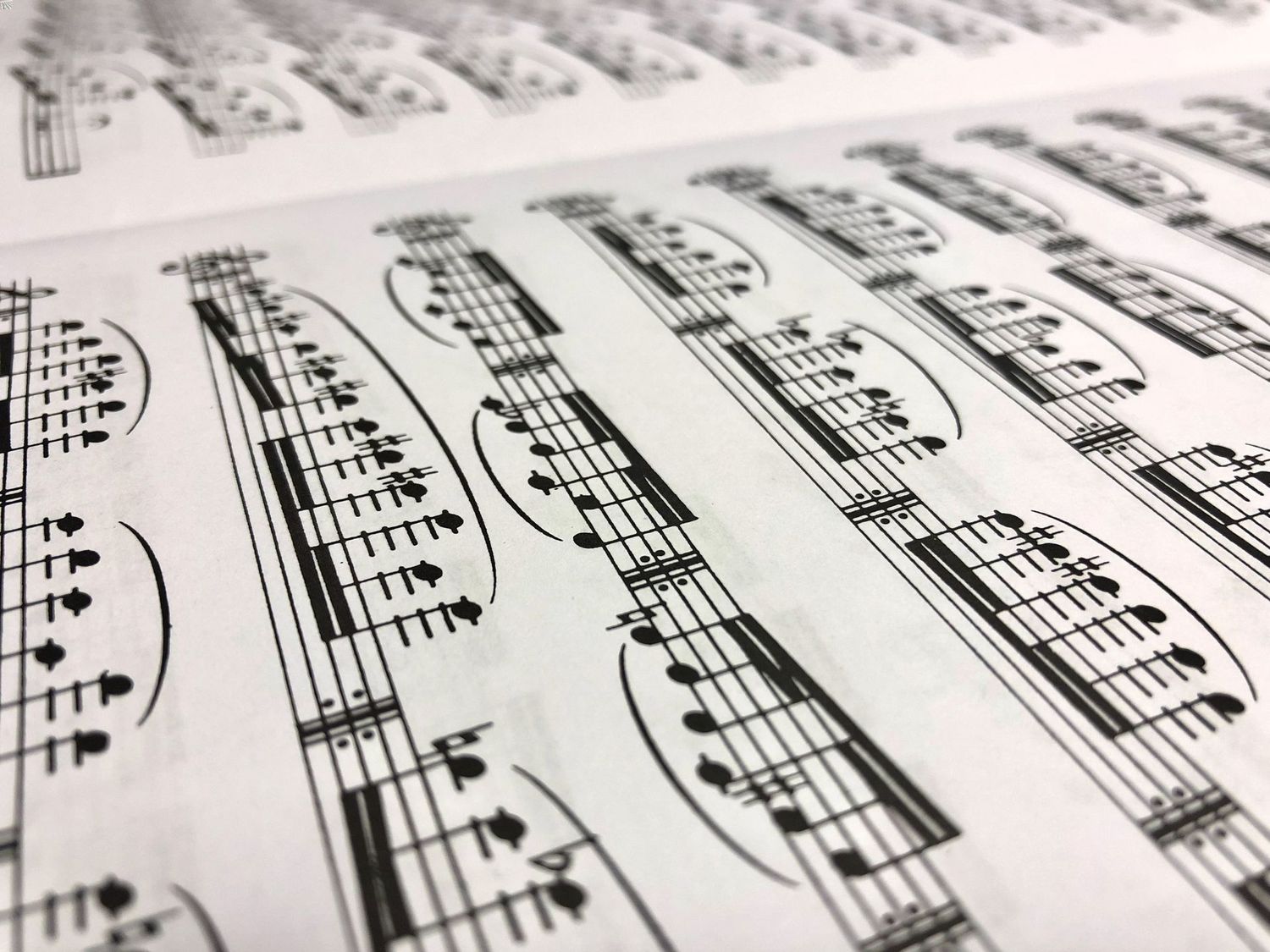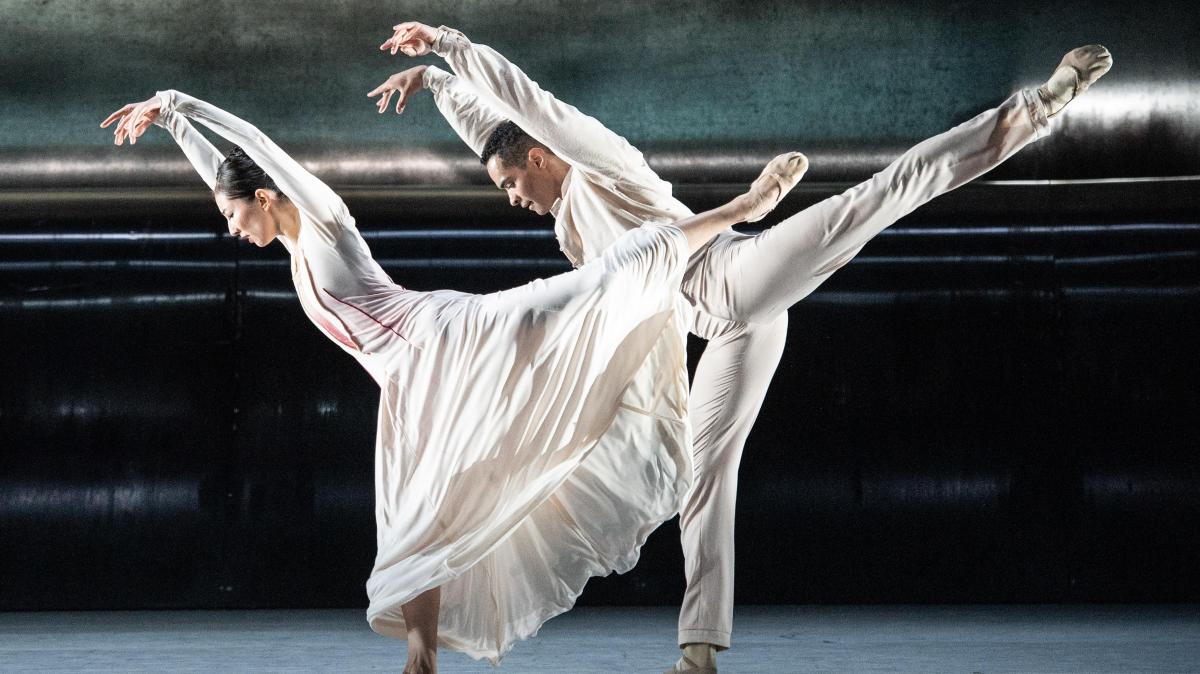Home>Production & Technology>Background Music>What Is It Called When A Singer Just Sings Without Background Music
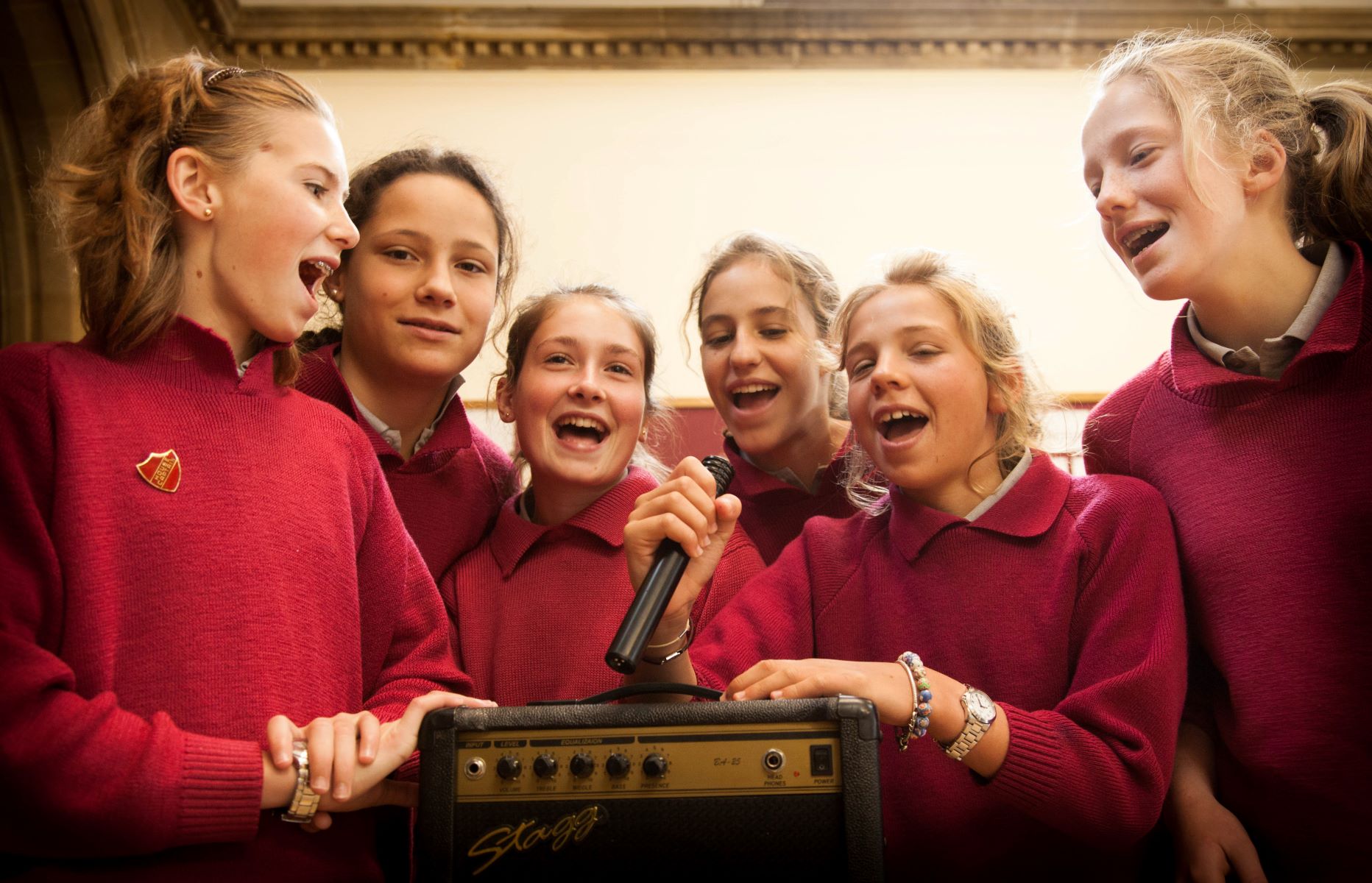

Background Music
What Is It Called When A Singer Just Sings Without Background Music
Published: October 30, 2023
Learn about a singer's performance without background music. Discover what it's called when a singer sings acapella, without any accompanying music.
(Many of the links in this article redirect to a specific reviewed product. Your purchase of these products through affiliate links helps to generate commission for AudioLover.com, at no extra cost. Learn more)
Table of Contents
Introduction
A Capella singing is a remarkable art form that captivates audiences with its raw vocal talent and harmonies. It is a style of singing where performers use only their voices to create music, without the accompaniment of any musical instruments or background music. This stripped-down approach places the focus squarely on the voices, allowing for an intimate and authentic musical experience.
The term “A Capella” is derived from the Italian phrase “in the manner of the chapel,” as it originated in religious music where choirs would sing without any instrumental accompaniment. However, A Capella singing has evolved and expanded beyond the confines of the chapel, finding its way into various genres of music including pop, jazz, rock, and even hip-hop.
What sets A Capella singing apart from other forms of musical performance is the reliance on vocal techniques, harmonies, and vocal percussion to recreate the melody and rhythms typically produced by instruments. This often involves intricate vocal arrangements, with different singers taking on designated parts, such as lead vocals, harmonies, bass lines, and vocal percussion.
The absence of background music in A Capella performances creates a unique sonic experience. It allows the audience to appreciate the incredible versatility and range of the human voice, as performers push the boundaries of what can be achieved with vocal technique alone. Additionally, the absence of instruments removes potential distractions, allowing the audience to fully immerse themselves in the artistry and emotion of the performances.
A Capella singing has gained immense popularity in recent years, thanks to talented artists and popular TV shows such as “Pitch Perfect” and “The Sing-Off,” which have helped to bring it into the mainstream. This has led to a flourishing community of A Capella enthusiasts, with dedicated groups and singers showcasing their talent through competitions, recordings, and live performances.
In the following sections, we will delve deeper into the history of A Capella singing, explore the benefits it offers, and highlight some notable artists and groups who have made significant contributions to this captivating art form.
Definition of A Capella Singing
A Capella singing is a style of vocal performance that involves singing without instrumental accompaniment. In this form of singing, the human voice takes center stage, with performers using their vocal skills to create harmonies, melody, and rhythm. Without the support of background music or instruments, A Capella singers rely solely on their voices to produce all the musical elements.
The term “A Capella” comes from the Italian phrase “in the manner of the chapel” and initially referred to choral music performed in religious settings without the use of instruments. Over time, A Capella singing has transcended its religious origins, making its way into various genres of music, including pop, jazz, gospel, and even contemporary a cappella rock.
One of the defining characteristics of A Capella singing is the use of intricate vocal arrangements. Singers are divided into different parts or vocal ranges, such as soprano, alto, tenor, and bass. Each part has its unique melodies and harmonies, which intertwine to create a rich and complex musical tapestry. The ability to blend voices and execute these arrangements with precision is a testament to the skill and talent of A Capella singers.
In addition to harmonies and melodies, A Capella singers often employ vocal percussion to mimic the beats and rhythms typically produced by instruments. This technique involves creating sounds such as drum beats, cymbals, and other percussive elements solely through vocal techniques. It adds depth and texture to A Capella performances, showcasing the versatility and creativity of the human voice.
It is worth noting that A Capella singing does not exclude the use of vocal effects or amplification. While the main focus remains on the pure quality of the voices, singers may occasionally use effects like reverb or echo to enhance the sonic experience. Similarly, in larger performances or venues, microphones and amplification may be used to ensure that the audience can fully appreciate and enjoy the intricate vocal arrangements.
A Capella singing has become increasingly popular in recent years, with dedicated groups, competitions, and events solely focused on showcasing this unique art form. It continues to evolve and push the boundaries of what can be achieved with vocal talent, captivating audiences worldwide with its harmonies, creativity, and sheer vocal prowess.
History of A Capella Singing
A Capella singing has a rich and diverse history that dates back centuries. Its origins can be traced to religious music in medieval Europe, where vocal groups would perform sacred hymns and chants without the accompaniment of musical instruments.
During this time, A Capella singing was closely tied to the Christian church and was primarily performed in cathedrals and monasteries. The absence of instruments was seen as a way to create a pure and spiritual musical experience, focusing solely on the voices and the messages conveyed through the lyrics.
In the Renaissance period, A Capella singing became especially prominent in sacred choral music. The compositions of renowned composers such as Giovanni Pierluigi da Palestrina and Thomas Tallis showcased the intricate harmonies and polyphonic textures achievable through voices alone. These choral works remain iconic and influential in the world of A Capella music to this day.
As music continued to evolve, A Capella singing found its way into various other genres. In African American communities, spirituals and gospel music became an important vehicle for A Capella expression, with powerful vocal performances and rich harmonies conveying deep emotions and spiritual messages.
In the 20th century, barbershop quartets and vocal jazz groups gained popularity, bringing A Capella singing into the mainstream. Barbershop quartets, characterized by close four-part harmonies and a cappella arrangements, became a staple of American musical culture and continue to have a devoted following today.
With the advent of recording technology, A Capella singing reached a broader audience. Artists and groups such as The Mills Brothers and The Andrews Sisters embraced the a cappella style, creating memorable hits using only their voices. Their success paved the way for A Capella singing to be appreciated beyond religious and niche contexts.
In recent years, A Capella singing has experienced a resurgence in popularity, thanks in part to groundbreaking TV shows like “The Sing-Off” and the movie series “Pitch Perfect.” These platforms have showcased the incredible talent and creativity of A Capella groups, introducing it to new generations and inspiring countless aspiring singers around the world.
A Capella singing has come a long way since its humble beginnings in the chapels of Europe. Today, it continues to thrive as a diverse and vibrant art form, captivating audiences with its rich harmonies, vocal prowess, and ability to create intricate soundscapes using only the human voice.
Popular Artists and Groups known for A Capella Singing
A Capella singing has produced numerous talented artists and groups who have gained recognition for their exceptional vocal abilities and innovative arrangements. These individuals and ensembles have pushed the boundaries of what can be achieved with a cappella music, captivating audiences with their unique sound and masterful performances.
One of the most renowned A Capella groups is Pentatonix. This American vocal ensemble rose to fame after winning the third season of “The Sing-Off” in 2011. Known for their intricate harmonies, vocal percussion, and remarkable vocal range, Pentatonix has gained a massive following and has garnered Grammy Awards for their music. They have released chart-topping albums, covered popular songs, and continue to push the boundaries of A Capella music.
Vocal band Straight No Chaser is another prominent name in the A Capella world. Founded at Indiana University in the late 1990s, this group gained worldwide fame after a video of their performance of “The 12 Days of Christmas” went viral on YouTube. Straight No Chaser has since released multiple albums, toured extensively, and captivated audiences with their powerful vocals and engaging stage presence.
The Swingle Singers, originally formed in the 1960s, are pioneers in the world of A Capella music. Their unique jazz vocal arrangements and stunning vocal precision have made them highly influential throughout the decades. With their innovative style and crossover collaborations, including work with artists like Luciano Berio and Quincy Jones, The Swingle Singers have solidified their place in A Capella history.
Home Free, a country vocal group, has also made a significant impact. Their captivating performances and tight harmonies have wowed audiences worldwide. The group gained popularity after appearing on the fourth season of “The Sing-Off” and has since released several successful albums, blending A Capella with their country roots.
Notable artist Peter Hollens has made a name for himself in the A Capella world through his solo vocal recordings and collaborations with various artists. Known for his captivating voice and innovative use of layering vocals, Hollens has achieved great success on YouTube and other digital platforms, reaching millions of fans with his beautiful renditions of popular songs.
These are just a few examples of the many talented artists and groups who have made significant contributions to the world of A Capella singing. Each brings their unique style, creativity, and vocal prowess to create unforgettable musical experiences, showcasing the power of the human voice and its ability to create extraordinary music.
Benefits of A Capella Singing
A Capella singing offers a range of benefits beyond the sheer joy of creating music. Engaging in this unique form of vocal performance can have positive effects on both physical and mental well-being. Here are some of the key benefits of A Capella singing:
-
Improves vocal skills: A Capella singing requires singers to develop and refine their vocal techniques, including breath control, pitch accuracy, and harmonizing. Regular practice can help singers strengthen their voices, expand their vocal range, and improve their overall vocal abilities.
-
Enhances musicality: A Capella singing encourages performers to develop a keen sense of pitch and rhythm. Singers must listen carefully to others in their group, blend their voices harmoniously, and stay in sync. This heightened musical awareness can benefit singers’ musicianship and their ability to sing in other musical contexts as well.
-
Promotes teamwork and collaboration: A Capella singing is a highly collaborative art form. Singers must work closely together, listening and responding to each other’s voices, and coordinating their parts to create a unified sound. This collaborative effort fosters teamwork, communication, and a sense of camaraderie among group members.
-
Boosts confidence and self-expression: A Capella singing provides a platform for individuals to express themselves creatively and showcase their unique vocal talents. Performing in front of others can help build confidence and self-assurance, allowing singers to embrace their individuality and share their passion for music.
-
Provides stress relief and emotional well-being: Singing in general has been shown to reduce stress levels and release endorphins, promoting a sense of relaxation and well-being. A Capella singing, in particular, allows singers to fully immerse themselves in the music, providing an emotional outlet and allowing for self-expression.
-
Creates social connections: A Capella groups often foster a strong sense of community and friendship among their members. Singers bond over their shared love for music and develop lasting relationships as they work together towards a common musical goal. This social aspect can bring joy and fulfillment to singers’ lives.
-
Offers a unique and intimate musical experience: A Capella singing has a distinct quality that allows for a deep connection between performers and listeners. The absence of instruments puts the focus squarely on the voices, creating an intimate and authentic musical experience that can be profoundly moving and memorable.
A Capella singing is not only a beautiful form of artistic expression but also a means of personal growth and self-discovery. Whether singing in a group or as a solo performer, embracing this unique style of vocal performance can have numerous benefits for singers, enhancing their skills, well-being, and overall enjoyment of music.
Challenges Faced by A Capella Singers
While A Capella singing offers many rewards, it also presents unique challenges that performers must navigate. From vocal demands to logistical considerations, A Capella singers face a range of obstacles that require dedication, discipline, and perseverance. Here are some of the challenges commonly faced by A Capella singers:
-
Vocal Technique and Stamina: A Capella singing places great demands on singers’ vocal technique and stamina. Singers must master breath control, pitch accuracy, and vocal projection to achieve the desired sound. The extended periods of singing without instrumental breaks can also strain the voice, requiring singers to build and maintain vocal endurance.
-
Complex Vocal Arrangements: A Capella singing often involves intricate vocal arrangements with multiple parts and harmonies. Memorizing and performing these complex arrangements accurately and seamlessly requires skill, focus, and attention to detail.
-
Blending and Intonation: Achieving a cohesive and balanced sound within a group of voices can be a challenge. Singers must listen carefully to one another, adjusting their vocal timbre and intonation to blend harmoniously. This requires a keen ear and the ability to make rapid adjustments in real-time.
-
Rhythm and Timing: A Capella singing often involves intricate rhythms and precise timing. Singers must have a solid sense of rhythm and work together to stay in sync, particularly when incorporating vocal percussion or beatboxing into the performance.
-
Logistical Challenges: Coordinating rehearsals, performances, and travel arrangements can be challenging, especially for larger A Capella groups. Ensuring consistent attendance, scheduling rehearsals that accommodate everyone’s availability, and managing the logistical aspects of performances require strong organizational skills and effective communication.
-
Creating a Unique Sound: With numerous A Capella groups and artists in the industry, creating a distinctive sound and style can be a challenge. Singers need to find their unique voice and artistic identity to stand out in a competitive landscape.
-
Building a Fanbase: Establishing a dedicated fanbase and gaining recognition in the music industry can be a hurdle for A Capella singers. Breaking into mainstream markets and appealing to a wider audience requires strategic promotion, marketing, and exposure.
Despite these challenges, A Capella singers who overcome these obstacles are rewarded with the satisfaction of creating beautiful music and captivating audiences with their vocal talents. It is through dedication, perseverance, and a love for the art form that A Capella singers continue to push the boundaries and leave a lasting impact in the world of music.
Influence of A Capella Singing in Popular Culture
A Capella singing has made a significant impact on popular culture, captivating audiences worldwide and leaving a lasting impression on various forms of media. From movies and television shows to viral videos and mainstream music, A Capella has found its way into the hearts and minds of people around the globe. Here are some notable ways in which A Capella singing has influenced popular culture:
-
Movie and Television: The success of movies like “Pitch Perfect” and TV shows like “The Sing-Off” has brought A Capella singing to the forefront of popular culture. These platforms have showcased the talent, creativity, and competitive spirit of A Capella groups, introducing the art form to a wider audience and inspiring a new generation of singers.
-
Viral Videos: A Capella performances have gained immense popularity on platforms like YouTube, where talented individuals and groups have showcased their skills and creativity. These viral videos have captivated millions, solidifying A Capella as an impressive and entertaining form of musical expression.
-
Mainstream Success: A Capella groups like Pentatonix and Straight No Chaser have achieved remarkable success in mainstream music. By releasing chart-topping albums and collaborating with renowned artists, they have demonstrated the commercial viability and widespread appeal of A Capella music.
-
Revival of Barbershop Music: The popularity of A Capella singing has led to a revival of interest in barbershop music. Barbershop quartets, known for their close harmonies and vocal blend, have experienced renewed appreciation and have become a regular feature at music festivals and competitions.
-
Cultural Diversity: A Capella singing has brought together individuals from diverse cultural backgrounds, fostering an inclusive and collaborative musical community. Groups such as Naturally 7, a vocal band known for incorporating beatboxing and a wide range of musical styles, celebrate cultural diversity through their music.
-
Education and Youth Empowerment: A Capella singing has become a popular form of musical education and youth empowerment. Many schools and colleges have created A Capella groups and competitions, providing students with opportunities to develop their vocal skills, boost their confidence, and strengthen their teamwork abilities.
-
Influence on Musical Arrangements: The intricate vocal arrangements and harmonies of A Capella music have influenced mainstream musicians and composers. Artists often incorporate A Capella elements into their recordings, adding layers of vocal harmony and showcasing the versatility of the human voice in popular songs.
Through its influence in movies, television, viral videos, mainstream music, and more, A Capella singing continues to shape and enrich popular culture. It has gained recognition as an art form that showcases the incredible talent, creativity, and dedication of those who partake in it. From entertainment to education, A Capella singing has become an essential part of our cultural landscape, delighting audiences and inspiring singers around the world.
Conclusion
A Capella singing is a captivating and unique art form that has captured the hearts of many. From its origins in religious music to its prominence in popular culture, A Capella continues to flourish as a powerful means of musical expression. It showcases the incredible talent and versatility of the human voice and has made a lasting impact on the world of music and entertainment.
Throughout history, A Capella singing has evolved and expanded, transcending its religious roots to encompass various genres and styles. Artists and groups such as Pentatonix, Straight No Chaser, and The Swingle Singers have pushed the boundaries of what can be achieved with vocal harmony and vocal percussion, inspiring countless singers and captivating audiences worldwide.
The benefits of A Capella singing extend beyond the sheer enjoyment of creating music. Singers develop vocal skills, enhance their musicality, and improve their overall confidence and self-expression. A Capella singing also fosters teamwork and collaboration, bringing people together through the shared love of music.
In popular culture, A Capella singing has made a significant impact through movies, television shows, viral videos, and mainstream success. It has revived interest in barbershop music, celebrated cultural diversity, and empowered the youth through education and musical opportunities. A Capella singing has influenced musical arrangements and left an indelible mark on contemporary music.
In conclusion, A Capella singing is a remarkable art form that continues to captivate and inspire. Its influence stretches far and wide, creating meaningful connections within communities and offering a unique and intimate musical experience. As A Capella singers push the boundaries of vocal creativity and innovation, we can look forward to the continued growth and evolution of this extraordinary form of musical expression.

